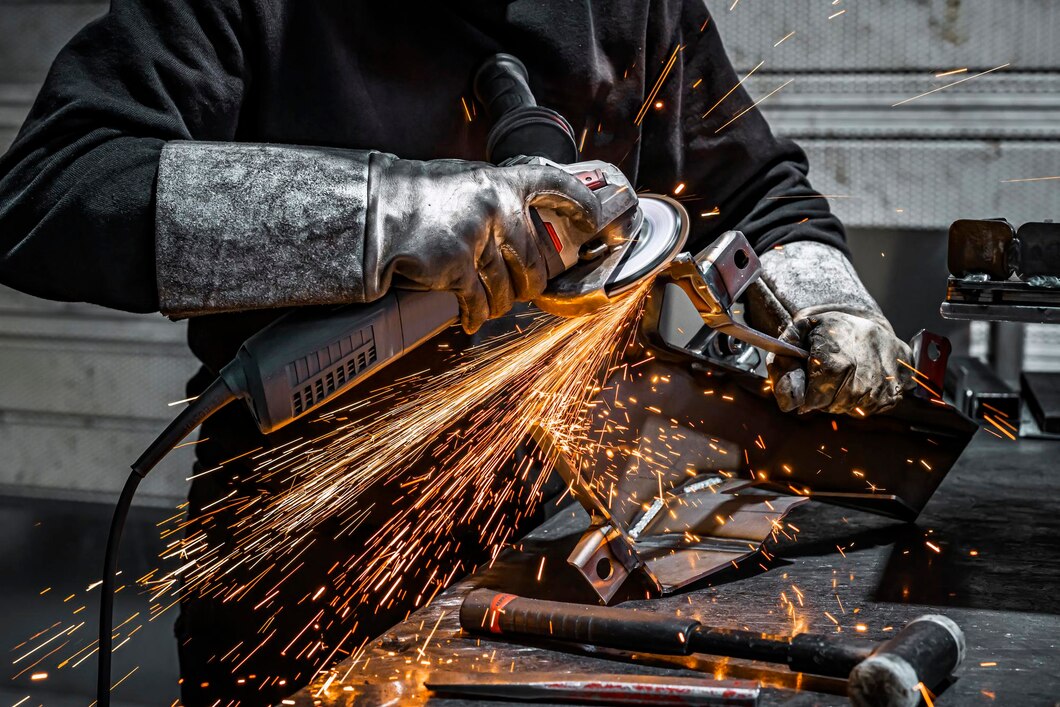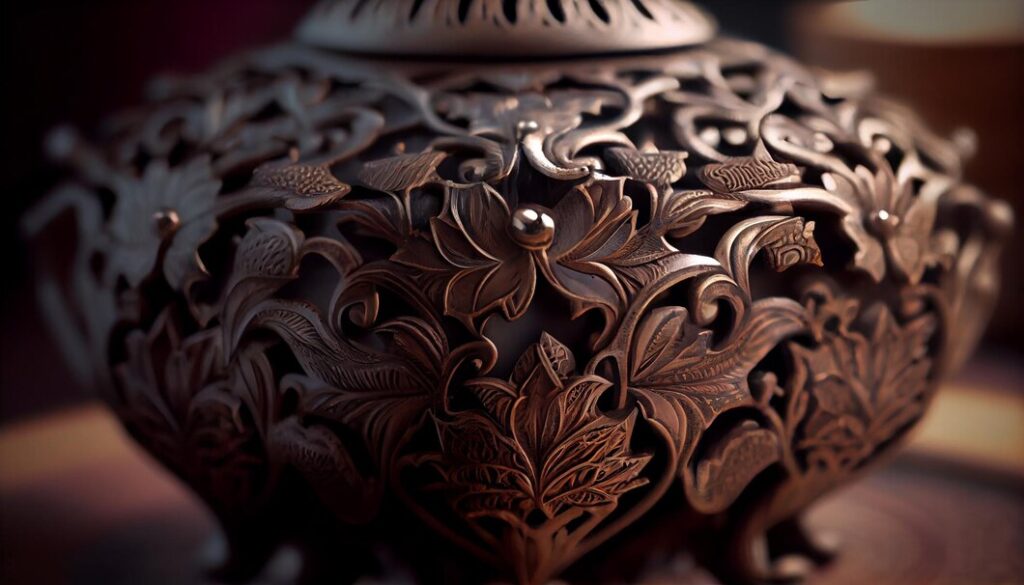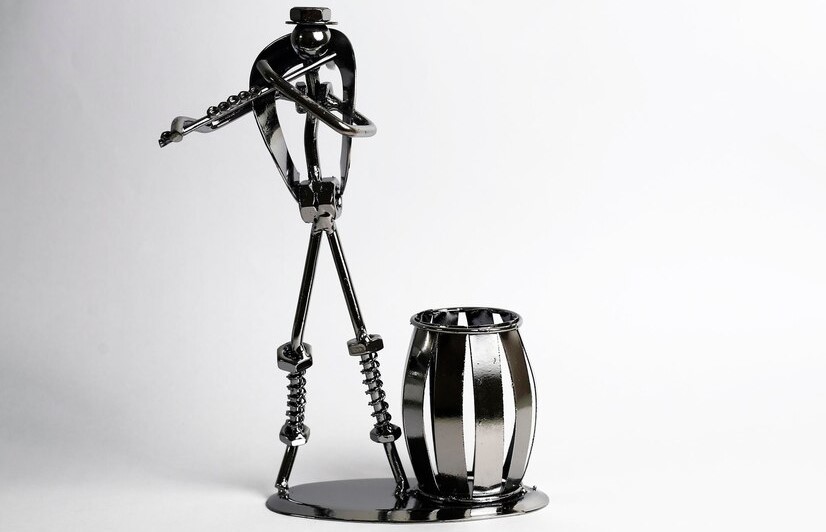Metalworking As A Form Of Expression: How To Create Meaningful Designs
by Deepanwita Dey How to Guides 01 March 2024

Metalworking is the art of creating decorative or useful objects from metal. These objects range from jewelry and silverware to large-scale structures like ships and bridges.
However, the history of metalworking dates back to the discovery of ores by primitive humans. These ancient humans discovered the properties of certain metals and smelted them to create metal.
Metal’s malleability and ductility allowed humans to transform it into weapons, tools, and other useful objects. While the Iron Age saw the use of iron for various tools and structures, the Modern Age discovered alloys and used metals for industrial purposes.
Today, metalwork is a captivating field of artistic creation. It offers artists a wide range of possibilities to mold, blend, and manipulate.
Welding, a versatile and modern art form, is debated among enthusiasts and connoisseurs. While some argue it’s a pure science, others believe it requires skilled artisans.
This article explores how metalworking is not just about building large structures but also a form of artistic expression, transcending the limitations of manual labor. So, let us begin!
Finding Inspiration
When creating metal art, it is crucial to consider the distinct traits of each metal, such as steel, copper, bronze, aluminum, and stainless steel, as they can significantly impact the final product’s appearance and texture.
Additionally, metal artists draw inspiration from various aspects of life, including nature, architecture, history, daily life, and social awareness.
For example, Creative Metal custom made metal signs can be inspired by vintage typography, rustic landscapes, or pop culture references.
The possibilities are limitless when it comes to creating metal art that is both visually striking and meaningful.
To bring these inspirations to life, metal artists require various tools and follow the right techniques.
Therefore, by carefully selecting the appropriate materials and tools, metal artists can produce stunning pieces that showcase their creativity and expertise.
Understanding Materials and Techniques

Metal art involves using various metals, such as steel, copper, bronze, aluminum, and stainless steel, each with unique properties.
However, the choice of metal significantly influences the final product’s appearance and feel.
The Metal Artist’s Toolkit
A metal artist’s toolkit includes the following welding tools:
- MIG & TIG welders.
- Plasma cutters.
- Hammers.
- Anvils.
- Hydraulic presses.
- Grinders.
- Sanders.
All these tools help them to shape and bend metals.
Moreover, heat is crucial in metalwork. Therefore, metal artists also use torches, kilns, and forges to make the metal malleable.
Also, metal artists must use safety equipment, such as the following:
- Safety glasses.
- Gloves.
- Welding helmets.
These items help protect themselves from sparks, intense light, and heat. A metal artist’s studio should be equipped with the necessary tools and materials to create a unique and visually appealing metal art piece.
The Metal Artist’s Techniques
The art of working with metal is a creative process that begins with an idea and inspires the artist’s vision. Next, they use various techniques and tools to bring this vision to life.
Welding is a fundamental aspect of a metal artist’s skillset, enabling them to fuse distinct components into a unified whole and providing precision in creating intricate designs.
Also, texture plays a crucial role in metal art. Thus, artists manipulate the metal surface using techniques such as:
- Grinding.
- Sanding.
- Heat application.
All these processes result in diverse effects, from smooth to rough.
Incorporating Symbolism and Meaning
Symbolism is an artistic style that uses symbols, shapes, colors, or identifiable images to convey a message or statement to the viewer.
It can appear hidden or unperceived, and some works are so abstract that they require explanation. Artists can express symbolism by representing emotions, moods, or thoughts, such as justice, freedom, or charity.
Figures often possess elements of their intended meaning in a more literal way, such as using an apple to represent temptation in Adam and Eve or a hammer and sickle to represent industrial workers and peasants in Soviet Russia.
The position and stance of a work can also reveal the nuance of the piece’s intended purpose. The materials chosen or how something is created also give meaning and possible symbolism to a piece.
An offshoot of symbolism, conceptual art focuses on “getting a concept across” in the image, emphasizing abstraction to cause contemplation.
Common Metal Art Representations
Given below are some of the most common areas of life where you can find significant artistry through metalwork—
Jewelry With Symbolic Motifs
This article explores the history of jewelry, tracing its evolution from the earliest known pieces to the modern era’s exquisite designs.
The art form predates recorded history, with evidence dating back thousands of years.
Early humans used simple materials like shells, bones, and stones for decorative and ceremonial purposes, often holding spiritual significance or symbolizing social status.
The enduring beauty of jewelry is showcased in this captivating journey.
Sculptures That Convey A Social Message

Art is a universal language that can transcend linguistic, cultural, and geographical barriers, evoking emotions and conveying powerful messages that inspire change.
It can move us, challenge our perceptions, and connect us deeper. Art can also serve as a platform for marginalized voices to be heard, advocating for social justice and positive change.
In essence, art is a powerful communication tool that touches people worldwide, regardless of their backgrounds, beliefs, or experiences.
Functional Metalwork With Personal Significance
Metalworking is an ancient art form that uses materials like iron, steel, copper, brass, bronze, silver, and gold for ornamental arts.
Metals have been important for their multifunctionality since ancient times, serving as tools for various items like eating vessels and weapons.
Over time, metals have become a significant element of decorative art, with gold being a particularly impressive material for ancient ceremonial items and sculptures.
Explore Metalworking As A Form Of Creative Expression
Metalwork is a complex art form that combines craftsmanship and artistic imagination, transforming raw materials into impressive sculptures and blending form and function in architectural and functional art pieces.
It has sparked innovations and redefined artistic boundaries and sparked innovation. Consequently, metal art bridged the gap between tradition and modernity.
Metalwork’s influence is evident in jewelry, public installations, furniture, and utensils. Its legacy lies in its tangible creations and inspiration, pushing the boundaries of artistic achievement.
The infinite creative potential of humans is brought to life through metalwork, enhancing cultural legacy and motivating the next generations.
Read Also:







































































































